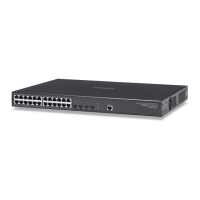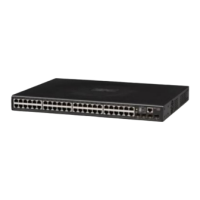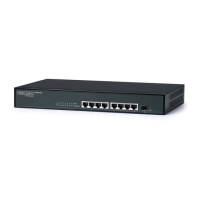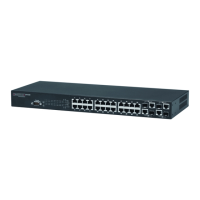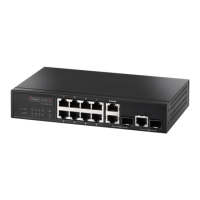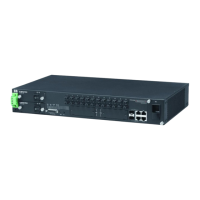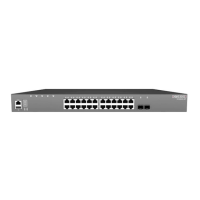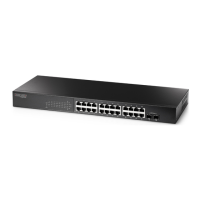Quality of Service
3-201
CLI – This example creates a policy map called “rd-policy,” sets the average
bandwidth the 1 Mbps, the burst rate to 1522 bps, and the response to reduce the
DSCP value for violating packets to 0.
Attaching a Policy Map to Ingress Queues
This function binds a policy map to the ingress queue of a particular interface.
Command Usage
• You must first define a class map, then define a policy map, and finally bind the
service policy to the required interface.
• You can only bind one policy map to an interface.
• The current firmware does not allow you to bind a policy map to an egress queue.
Command Attributes
• Ports – Specifies a port.
• Ingress – Applies the rule to ingress traffic.
• Enabled – Check this to enable a policy map on the specified port.
• Policy Map – Select the appropriate policy map from the scroll-down box.
Web – Click QoS, DiffServ, Service Policy. Check Enabled and choose a Policy Map
for a port from the scroll-down box, then click Apply.
Figure 3-100 Service Policy Settings
CLI – This example applies a service policy to an ingress interface.
Console(config)#policy-map rd_policy#3 4-246
Console(config-pmap)#class rd_class#3 4-246
Console(config-pmap-c)#set ip dscp 4 4-247
Console(config-pmap-c)#police 100000 1522 exceed-action
set ip dscp 0 4-248
Console(config-pmap-c)#
Console(config)#interface ethernet 1/5 4-135
Console(config-if)#service-policy input rd_policy#3 4-249
Console(config-if)#

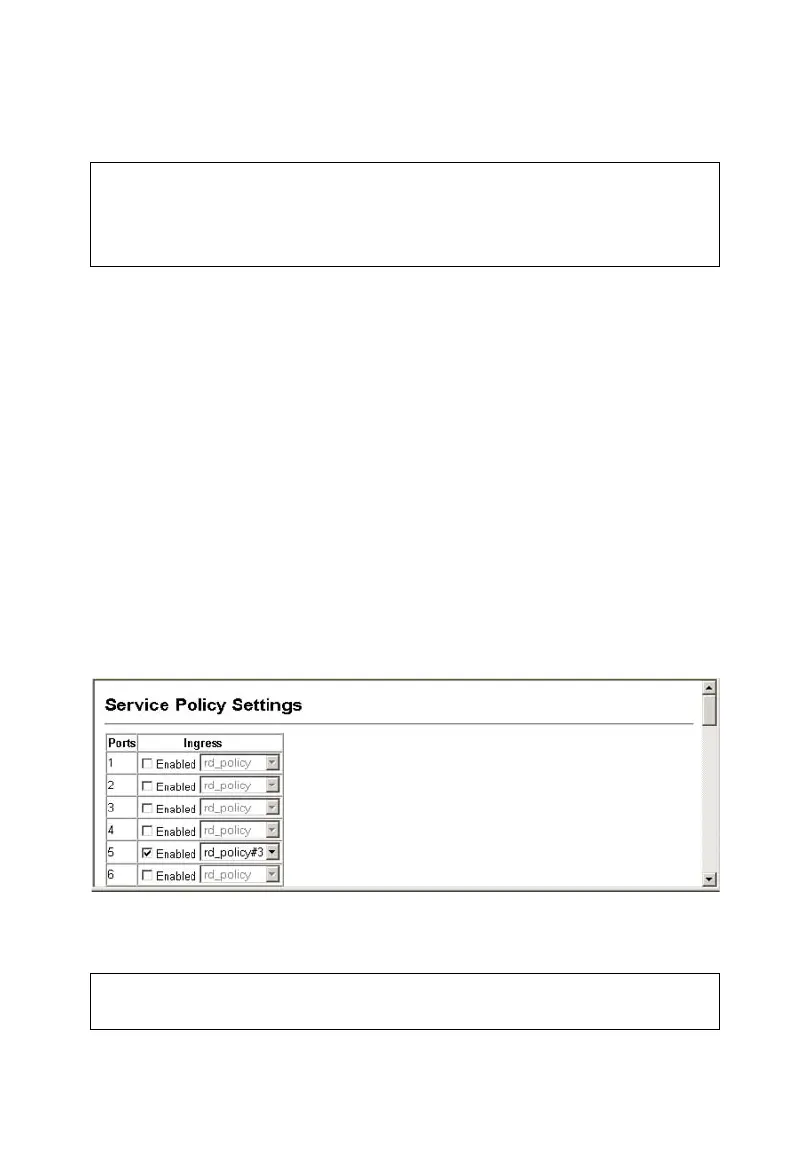